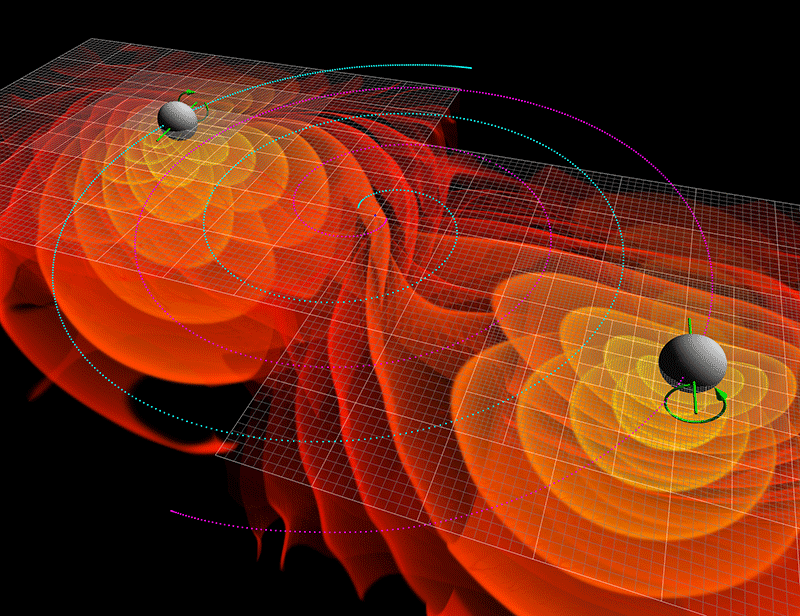Image Courtesy C. Henze/NASA Ames Research Center
The first gravitational waves were detected on 14th September 2015 in the LIGO detectors in Hanford, Washington and Livingston, Louisiana (both in the U.S.A.) shortly after they came online.
Construction of the LIGO was completed in 1999, following which the LIGO was already operational for 3.5 years between 2005 and 2010. However, it did not detect any gravitational waves during that period.It was upgraded in 2010 to increase it's sensitivity to 10-19m, or 10,000 times the width of a proton.
The event was named GW150914 (which stands for Gravitational Wave and the date of observation 2015-09-14). Gravitational wave instruments are whole-sky monitors with little ability to pinpoint the direction of the signal. As such, at least three or more detectors are required to pinpoint a location in the sky via triangulation. For this reason, LIGO can only confirm the location of an object to an arc with only two detectors currently operational. This will soon change with a third detector being built in India which will allow for pinpointing an object's location with a relatively good accuracy
Gravitational waves are disturbances in the fabric of space-time which are caused by the acceleration of massive bodies. This causes space to contract and expand locally due to the wave. This change is usually so small that it goes undetected, even for the most precinterferometers in laboratories. The solution: build a bigger interferometer. When astronomers couldn't see an object clearly in the sky, they simply built a bigger telescope. When physicists approached the limits of energy thatcould be supplied in particle accelerators, they simply built bigger ones. Why wouldn't that work here? So, in simple terms, the LIGO detectors could be described as a glorified cosmic earthquake detector. The detectors are only a little more than a giant interferometer with 4-km long arms.
A common misconception is that gravitational waves prove the existence of gravitons by taking the example of wave-particle duality. This however, is not the case as the Compton wavelength of gravitons is about 1.6 light years which is several orders of magnitude higher than the 1700km wavelength of the GW170104 event or any gravitational wave event for that matter. In fact, a Jupiter-sized detector placed in close orbit around a neutron star would detected a graviton about once in every 10 years (best estimate). This, however, would be indistinguishable from background neutrino detections. To make matters worse, the size of the neutrino shield required would ensure collapse into a black hole.
Gravitational wave astronomy opens up a previously unseeable portion of the sky. It also provides a ton of new data for advancing several fields and proves a prediction of the general theory of relativity.
Here is a video by the Thought Emporium detailing the construction and operation of a laser interferometer built using LEGO pieces:

